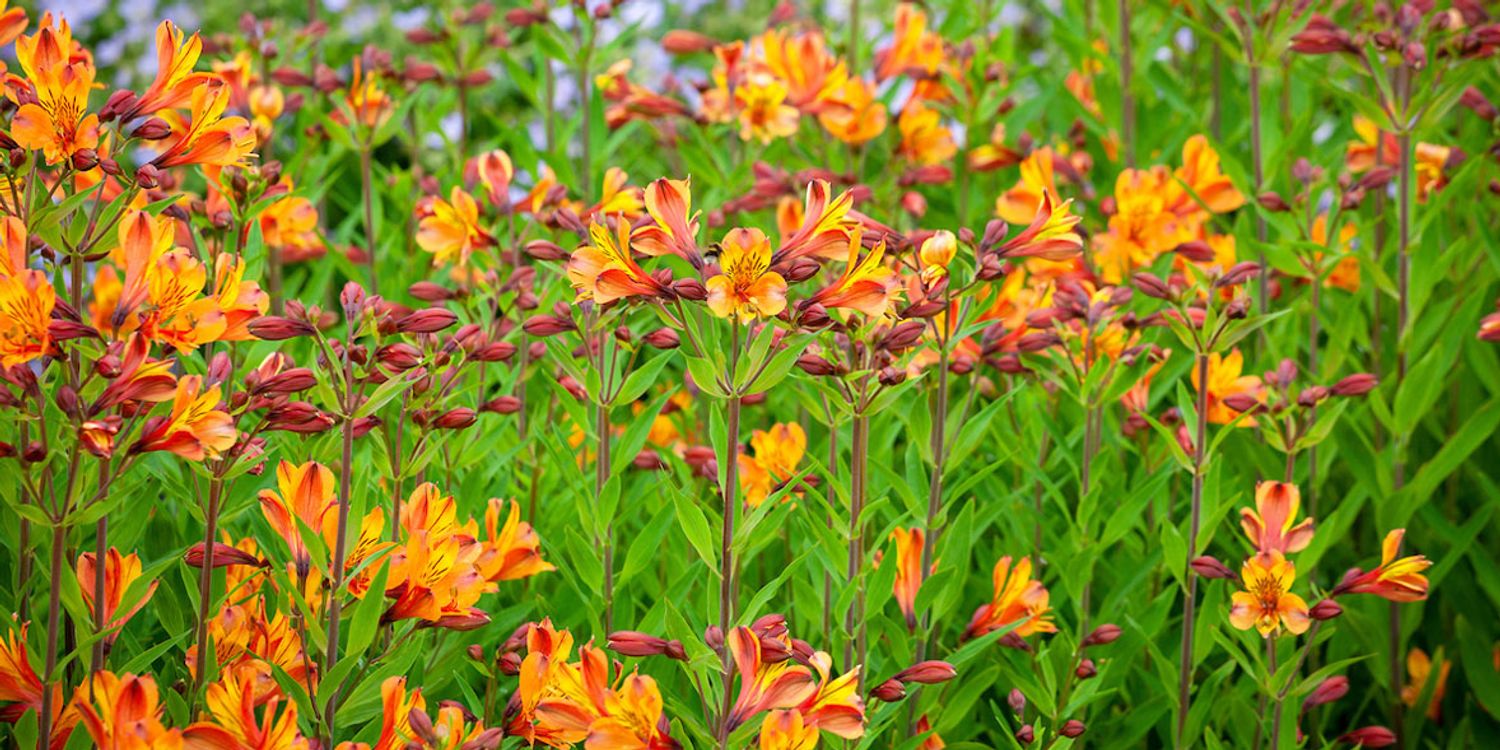Table of Contents
Alstroemeria, widely known as the Peruvian Lily, is one of the most amazing flowering plants in the world. Originating from the climates of Latin America, these gorgeous flowering plants can become the pride of your garden. These stunning flowers bloom mostly in early to mid-summer, and you can grow these plants of alstroemeria in pots, making them an incredible addition to your small indoor gardens.
Growing these red, orange, purple, or pink flowers in your pot garden can be a rewarding experience. With the perfect conditions and care, you will be able to enjoy a lasting display of bloom throughout the season. Here are some amazing tips and tricks that can help you grow alstroemeria in pots.
Try these tips regarding pot size, soil requirements, watering, and fertilizing techniques and see these Peruvian lilies grow in pots.
How to Grow Alstroemeria in Pots
There are a lot of things to keep in mind when you are trying to grow alstroemeria in a pot. Even though these plants find their most suitable growing circumstances when they are planted directly on the ground, some smaller versions of them can thrive in pot gardens as well. Throughout this article, gardening enthusiasts will get all the important information about growing alstroemeria in pots. Besides, they will also know some tips on how to take care of these plants in different seasons. Stick with us until the end for more.
1. Choosing a Container
Choosing the right containers will be crucial when you are planning to grow alstroemeria in pots. The container you are choosing must have a great drainage system to send the excess water out from the base.
You should know that these Peruvian lilies grow better when they get a chance to spread their roots freely. Therefore, you should always go for a wider container with more depth. A container 40 cm in diameter can be perfect for mature plants. However, make sure not to over-pot the smaller plants, as that might cause water clogging.
Always choose a container that is slightly bigger than the recent root system, and you should keep moving to a slightly larger container every time.
2. Choosing the Soil
Choosing the right kind of soil is also very important when you are trying to grow alstroemeria in a pot. One should always opt for a soil mix that comes with an improved drainage system for the plants. Using propagating bark can be an amazing solution when you are trying to choose the best soil for better drainage. Propagating barks are also perfect for mulching the top of the pots, and you can retain the moisture and keep the weeds down.
3. Potting the Plant
Alstroemeria is often potted in containers at the beginning of the spring, and you need to repot the plants in a larger container every two years or so. It is best to pot only one plant in a container, as alstroemeria plants can grow quickly. Potting multiple plants in a pot can become pretty congested for the plants.
However, growing alstroemeria in a large container along with other plants can be fine as long as you repot the plants every couple of years. In that case, you need to ensure that the other plants in these containers are fond of the same soil and weather conditions, like alstroemeria. Most important of all, make sure these other plants are not overly competitive.
Planting Alstroemeria in Pot
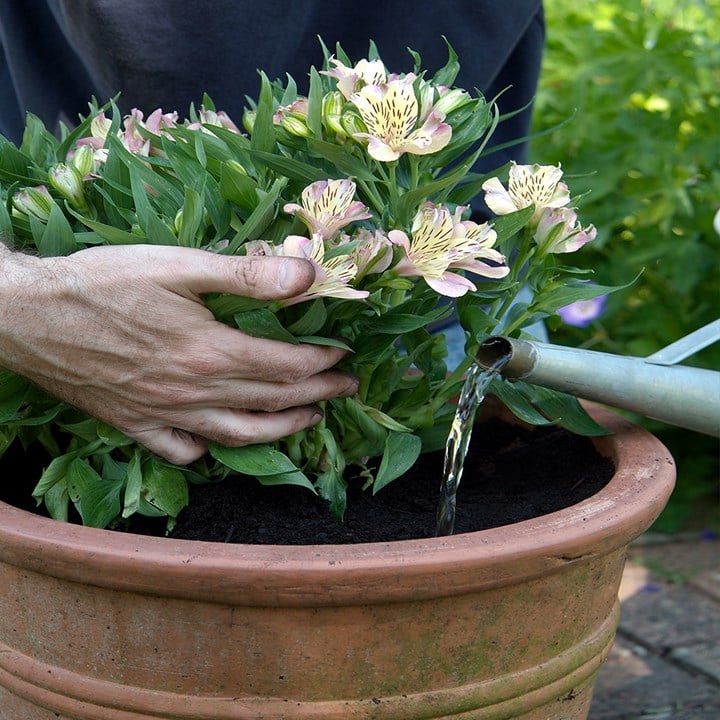
Next is planting alstroemeria in the pot. There are a few things you need to remember while planting alstroemeria plants in the container we have prepared so far.
- First things first, always handle the plants and the tubers with gloves. The sap of these plants can cause irritation in humans.
- As we have already said, alstroemerias are the flowers of summer. Therefore, you need to plant it in early spring in a sheltered, sunny spot.
- Space these plants about 45-60cm apart while planting. The planting hole needs to be 20 cm deep.
- When you plant them deeply, the tubers will sit below the normal level of soil frost. This can protect them and help them be strong and established. You can also mulch the clumps in autumn and winter to protect these plants even further for better results.
- Planting alstroemerias inside a greenhouse can also be a great idea. Pot these up in five-litre pots in gritty compost. Also, keep the plants frost-free and start feeding them as they start shooting in spring for an almost continuous flower harvest.
This is the best way to plant alstroemeria in a pot. Now that you have successfully potted the plants let’s move on to how to take care of them as they start growing.
Taking Care of Alstroemeria in Pot
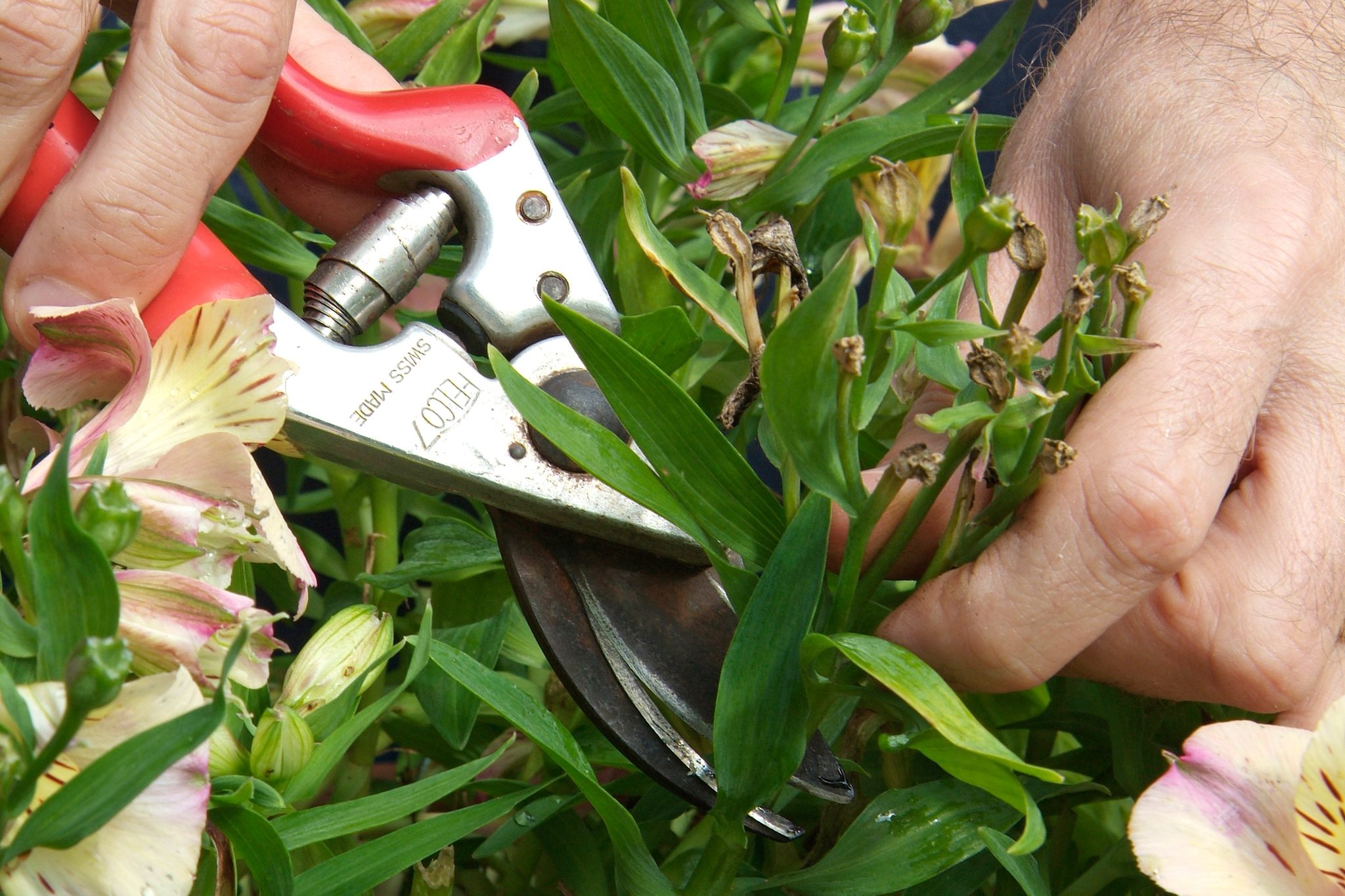
Alstroemeria plants, when you plant them properly and take care of them properly, can add a little pop of colour to the gardens. With the right care, these plants can bloom for years. However, even though many people get the planting part right, taking care of these beautiful Peruvian lily plants is even more important. Here are some tips to help you take care of these plants properly.
1. Watering
Watering alstroemeria plants regularly during the prolonged dry spell. However, these plants are relatively more drought-tolerant. If you are plating alstroemerias in a greenhouse, it might require frequent watering due to their lack of exposure to natural rainfall and limited volume of soil.
2. Fertilising
Adding a slow-release fertilizer in the spring can ensure better flowering. Try to opt for high-potash fertilisers for any container-grown alstroemerias, like tomato feed.
- Seaweed plant fertilizer promotes strong growth, increased crop yields and lush foliage
- Multi-purpose fertiliser which includes extra iron and plant based amino acids that feed garden...
- Suitable for use on lawns, fruit, vegetables, flowers, trees and all garden plants
3. Staking
Alstroemerias can reach over 60 cm. Flowers might make the top of the plant heavy. Therefore, unless you find a sheltered spot, the taller varieties will need staking. That might be the only way to stop the plants from collapsing in the wind or rain.
4. Deadheading and Harvesting
You should keep harvesting the flowers and deadheading the faded ones. The best way to do that is to pull them out instead of cutting the stems. You should also hold the lower part of the stem. Doing this the rough way instead of cutting the stems might provoke the plant to flower more.
5. Dividing
Once the plants have settled in for a few years, alstroemerias spread below the ground. Propagate the plants by division every one to two years to avoid congestion. The roots of the plant are fragile, and you need to lift them and divide them with care before replanting them immediately. Do the division in the early autumn for better results. Divide the clumps and replant them in another pot.
6. Overwintering
Alstroemerias have tender tubers. These plants easily become hardy as they get established in mild autumns and winters. It might take great mulch in the colder months, and it might emerge again in the next season.
You should mulch deeply for the first few winters. You can give them some amazing chances, especially when you live in the colder parts of the country.
Now that we have described how to take care of the alstroemerias in a pot, here is the seasonal checklist that will help you grow the plants properly.
The Seasonal Checklist for Alstroemerias in a Pot
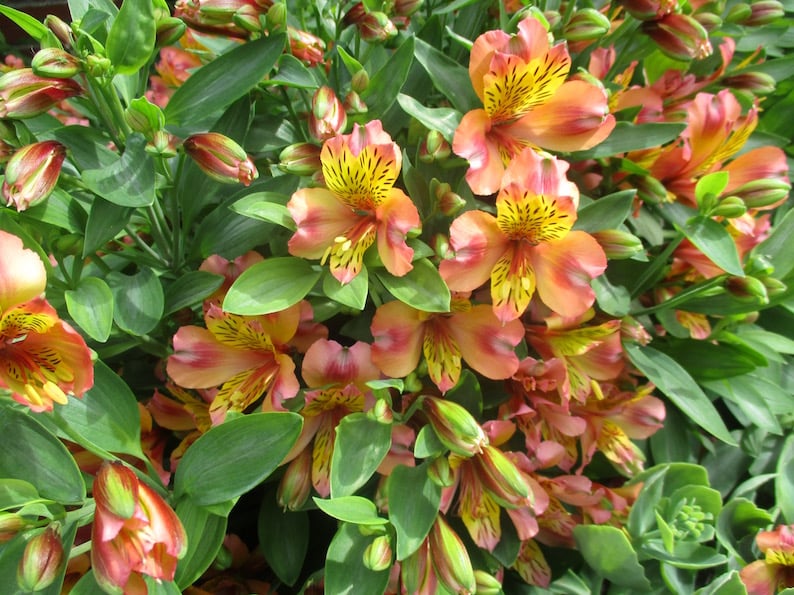
Spring: Place the plant in a pot. Place the pot in a sheltered yet sunny place. Place a slow-release fertiliser enriched in potash, like tomato feed.
Summer: Pick up the flowers and deadhead the fading flowers. Pick them up instead of cutting them to encourage the plant to flower more.
Autumn: Enjoy the alstroemeria flowers until the early winter.
Winter: Mulching time. Mulch deeply, especially on the newly planted plants, and help them establish.
Pests, Diseases, and Other Common Issues
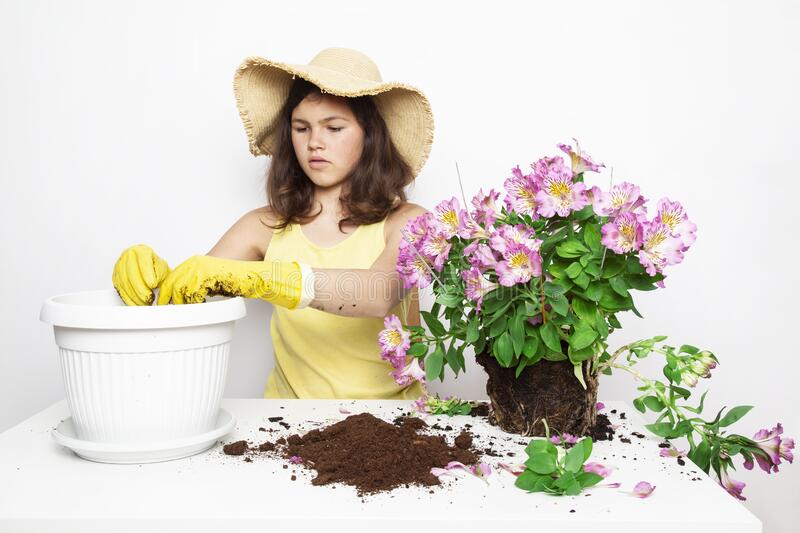
Alstroemerias in a pot will attract pests. Like all living beings, these plants will attract disease too. So, how to take care of these common issues? Here, we have tried to answer some common queries about these plants.
Conclusion
These are the most crucial tips you should know when you are trying to grow alstroemerias in a pot. Follow these tips, and you will have these stunning Peruvian lilies of different colours, making your pot garden look beautiful. These flowers also go well with roses. Grow your own alstroemerias by Following these tips. Comment below for more gardening tips.
Frequently Asked Questions
Why Are Alstroemeria Plants Not Flowering?
Improper harvesting of the plants might affect their flowering. Try to pull the stems with a yank to harvest the plants instead of cutting them. Another issue the plants might be facing if they are not flowering is water clogging. Make sure the plant has a perfect drainage system for your trees to grow and bloom perfectly.
Why Are the Plants Dying?
Well, while planting the seeds of alstroemeria in a pot, it is really important to plant them deeply in the soil. In such cases, the winter frosts often get to these trees. Another reason for this might very well be the water-clogged soil.
Why Are the Leaves of These Plants Turning Yellow?
Cold temperatures are the nemesis of your alstroemeria plants. Mulch the plants over the winter and try to improve the soil with better drainage for better results.
What is Eating the Alstroemerias?
Some creatures, like snails and slugs, love the alstroemeria plants. These are one of their favourite meals. Therefore, always ensure the best protection for these plants while planting them. Keep the pots as far away as possible from the placers that snails can reach.

